Adaptive L2 Regularization in Person Re-Identification
Xingyang Ni,
Liang Fang,
Heikki Juhani Huttunen
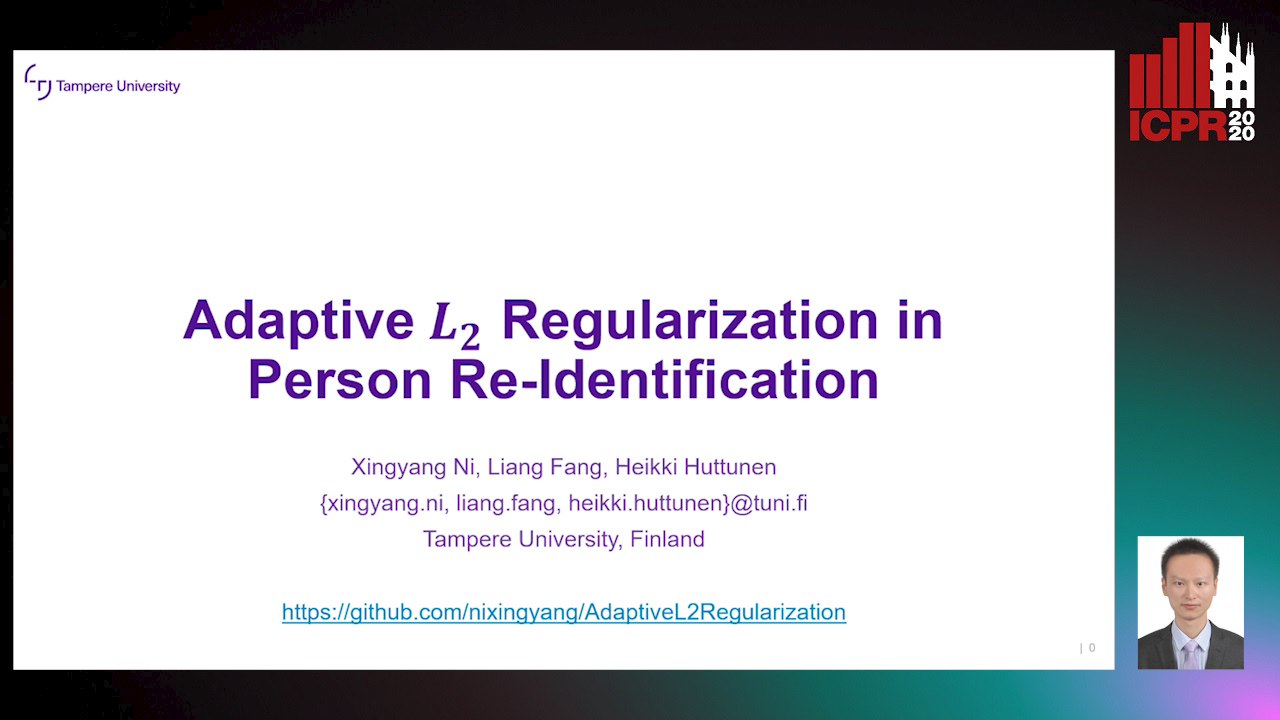
Auto-TLDR; AdaptiveReID: Adaptive L2 Regularization for Person Re-identification
Similar papers
Progressive Learning Algorithm for Efficient Person Re-Identification
Zhen Li, Hanyang Shao, Liang Niu, Nian Xue

Auto-TLDR; Progressive Learning Algorithm for Large-Scale Person Re-Identification
Abstract Slides Poster Similar
Top-DB-Net: Top DropBlock for Activation Enhancement in Person Re-Identification
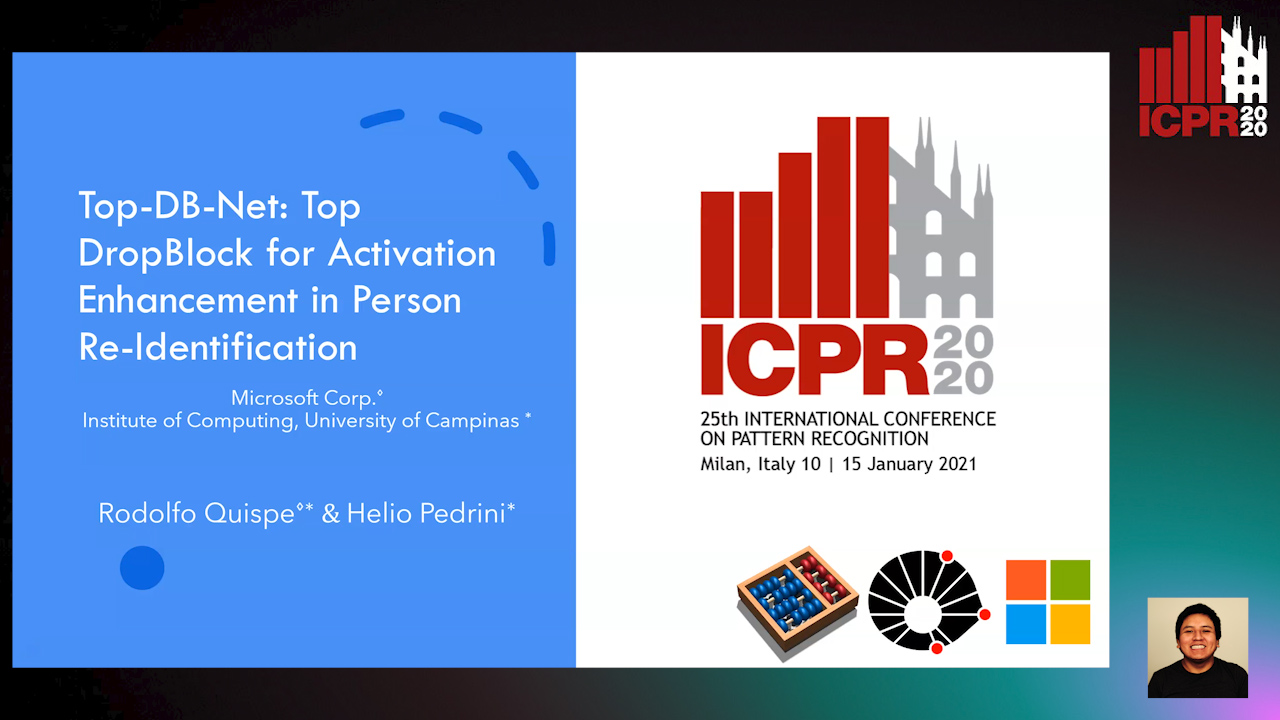
Auto-TLDR; Top-DB-Net for Person Re-Identification using Top DropBlock
Abstract Slides Poster Similar
Building Computationally Efficient and Well-Generalizing Person Re-Identification Models with Metric Learning
Vladislav Sovrasov, Dmitry Sidnev
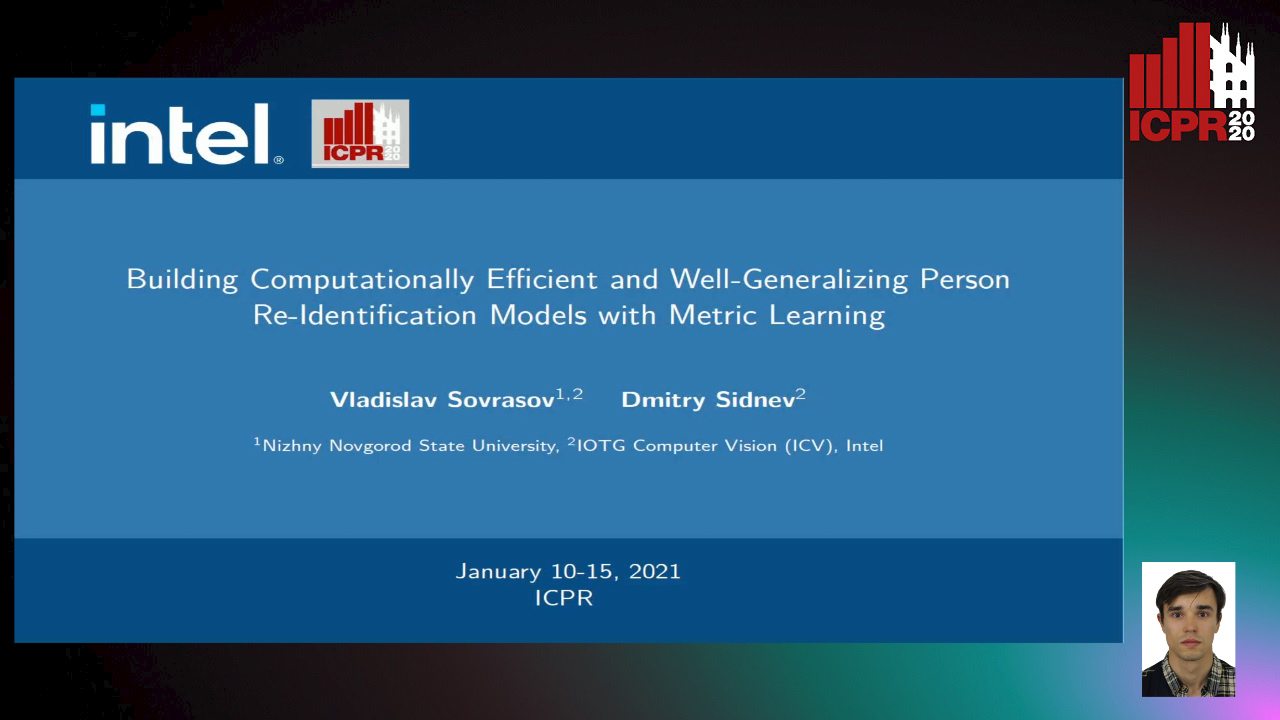
Auto-TLDR; Cross-Domain Generalization in Person Re-identification using Omni-Scale Network
Attentive Part-Aware Networks for Partial Person Re-Identification
Lijuan Huo, Chunfeng Song, Zhengyi Liu, Zhaoxiang Zhang
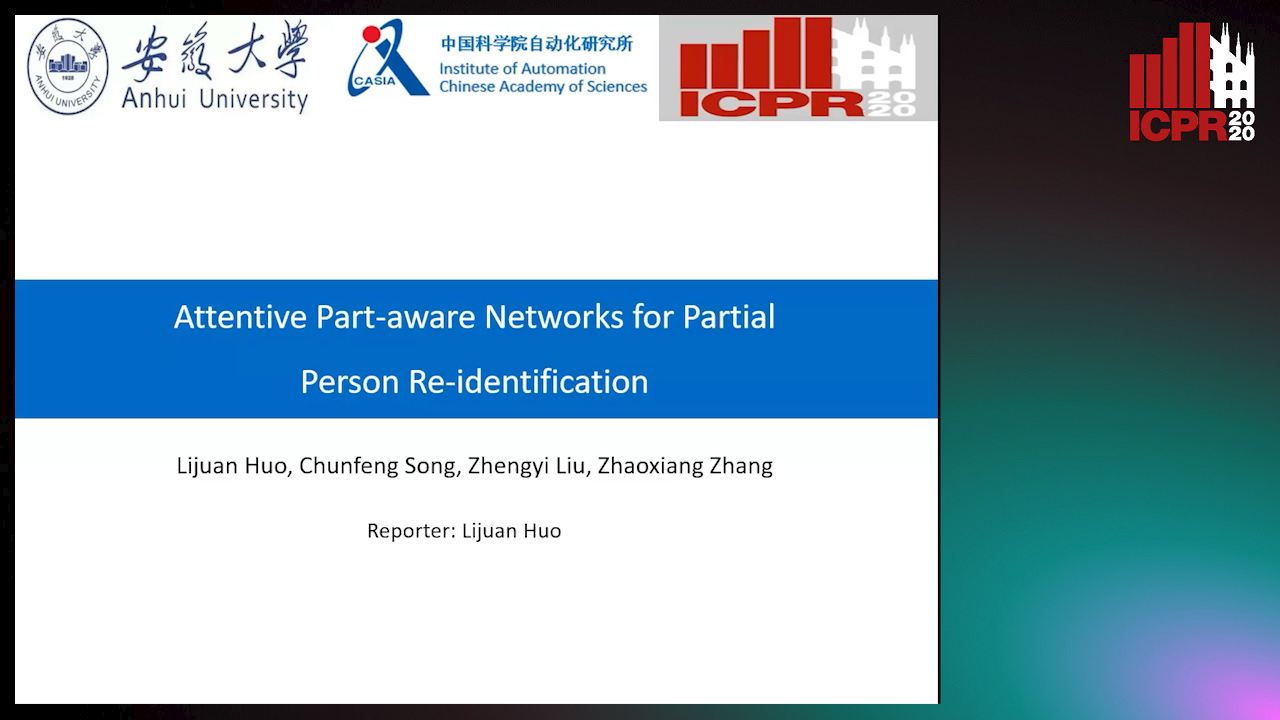
Auto-TLDR; Part-Aware Learning for Partial Person Re-identification
Abstract Slides Poster Similar
Not 3D Re-ID: Simple Single Stream 2D Convolution for Robust Video Re-Identification

Auto-TLDR; ResNet50-IBN for Video-based Person Re-Identification using Single Stream 2D Convolution Network
Abstract Slides Poster Similar
Deep Top-Rank Counter Metric for Person Re-Identification
Chen Chen, Hao Dou, Xiyuan Hu, Silong Peng
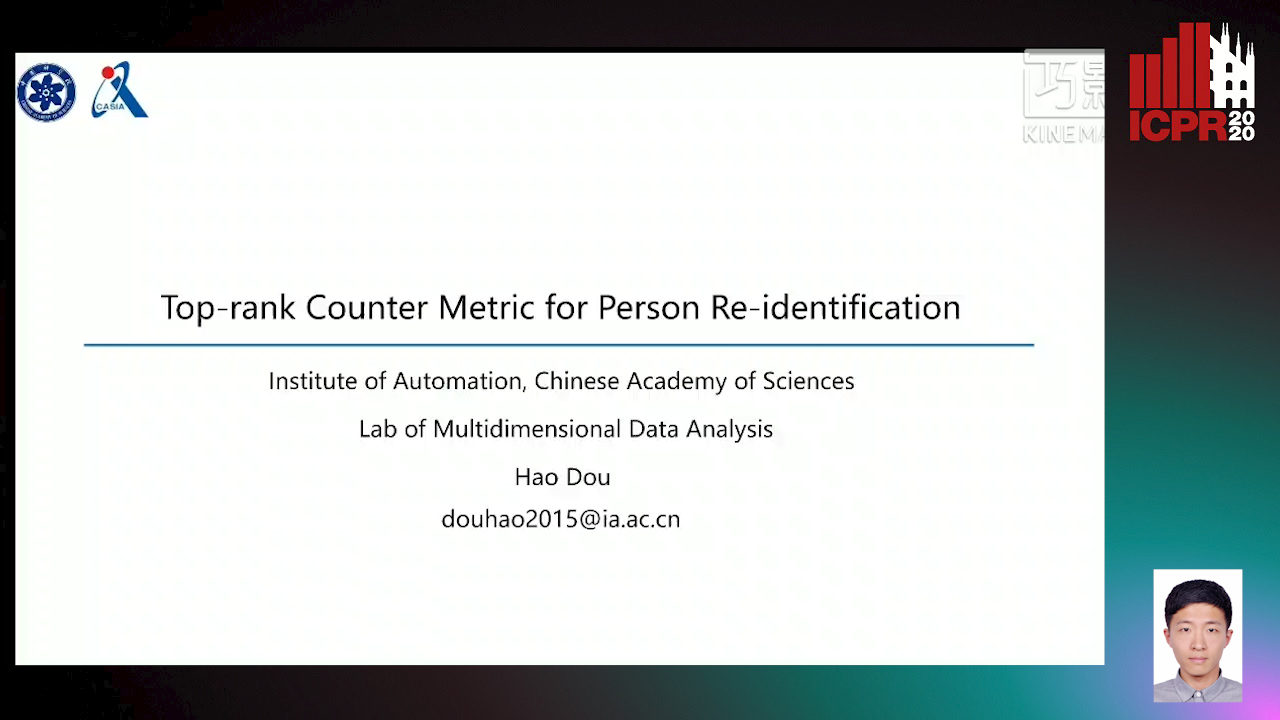
Auto-TLDR; Deep Top-Rank Counter Metric for Person Re-identification
Abstract Slides Poster Similar
Progressive Unsupervised Domain Adaptation for Image-Based Person Re-Identification
Mingliang Yang, Da Huang, Jing Zhao

Auto-TLDR; Progressive Unsupervised Domain Adaptation for Person Re-Identification
Abstract Slides Poster Similar
Self and Channel Attention Network for Person Re-Identification
Asad Munir, Niki Martinel, Christian Micheloni

Auto-TLDR; SCAN: Self and Channel Attention Network for Person Re-identification
Abstract Slides Poster Similar
Pose Variation Adaptation for Person Re-Identification
Lei Zhang, Na Jiang, Qishuai Diao, Yue Xu, Zhong Zhou, Wei Wu
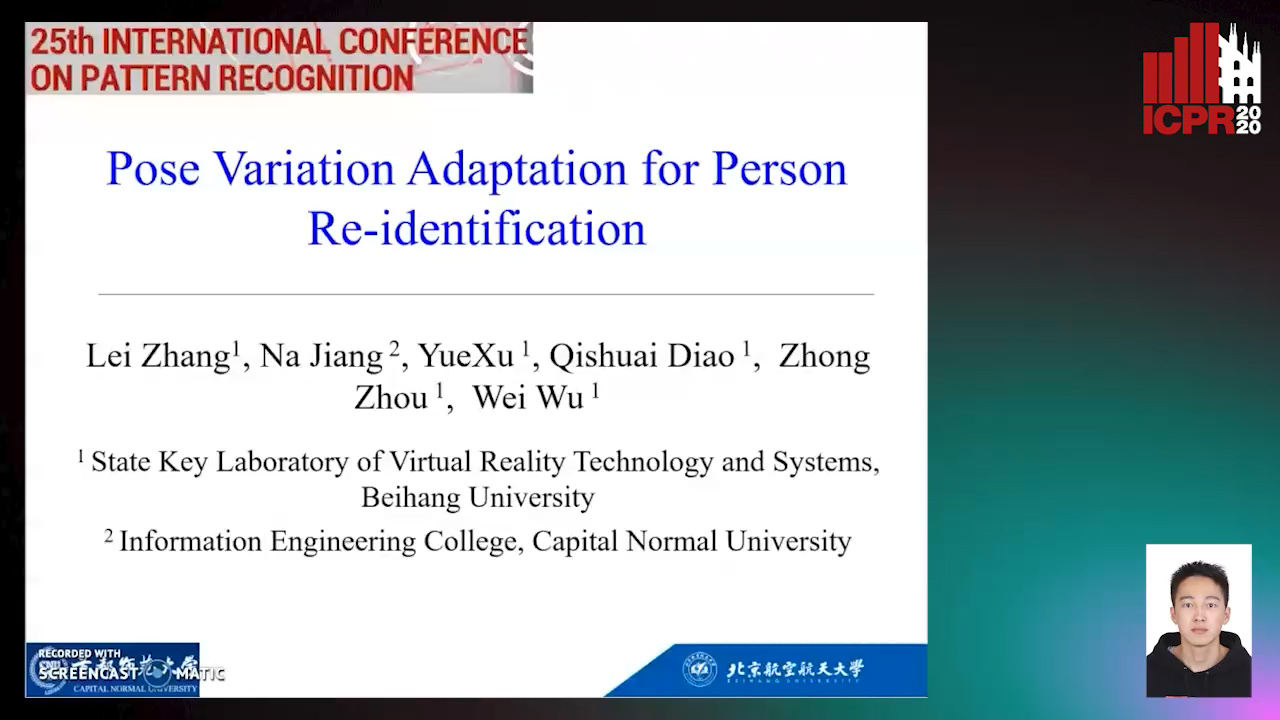
Auto-TLDR; Pose Transfer Generative Adversarial Network for Person Re-identification
Abstract Slides Poster Similar
Rethinking ReID:Multi-Feature Fusion Person Re-Identification Based on Orientation Constraints
Mingjing Ai, Guozhi Shan, Bo Liu, Tianyang Liu
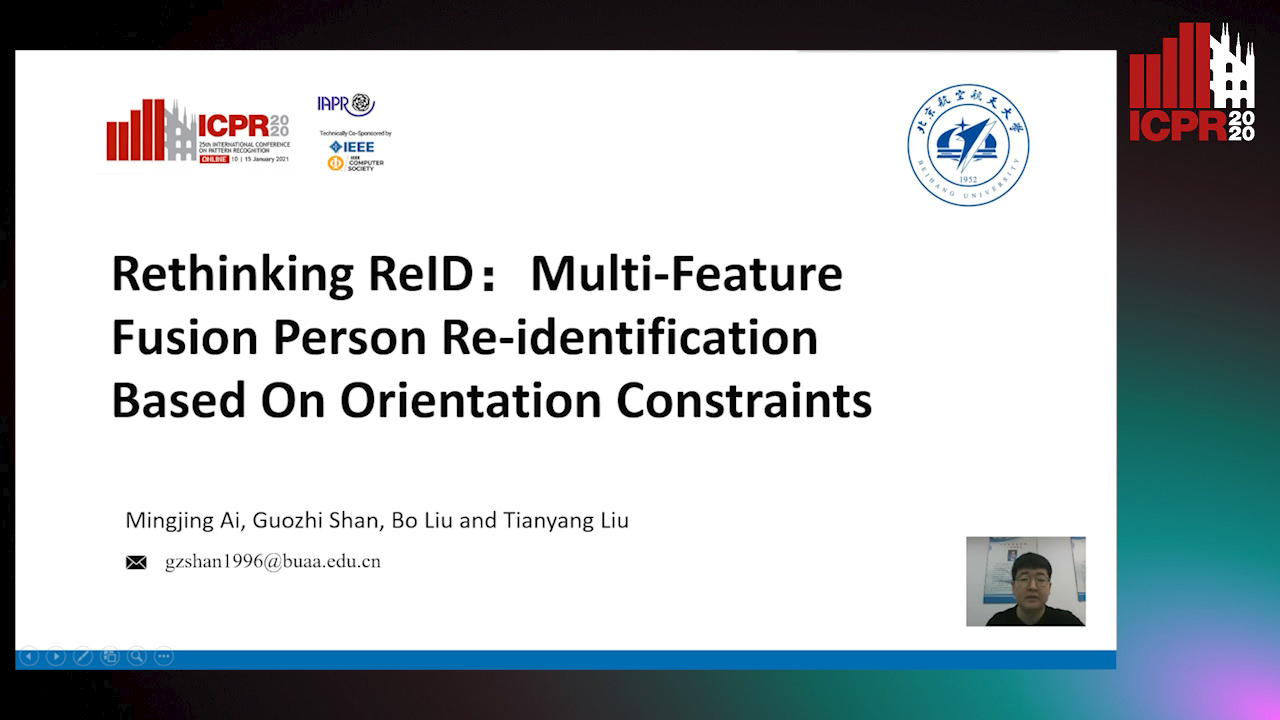
Auto-TLDR; Person Re-identification with Orientation Constrained Network
Abstract Slides Poster Similar
Multi-Level Deep Learning Vehicle Re-Identification Using Ranked-Based Loss Functions
Eleni Kamenou, Jesus Martinez-Del-Rincon, Paul Miller, Patricia Devlin - Hill
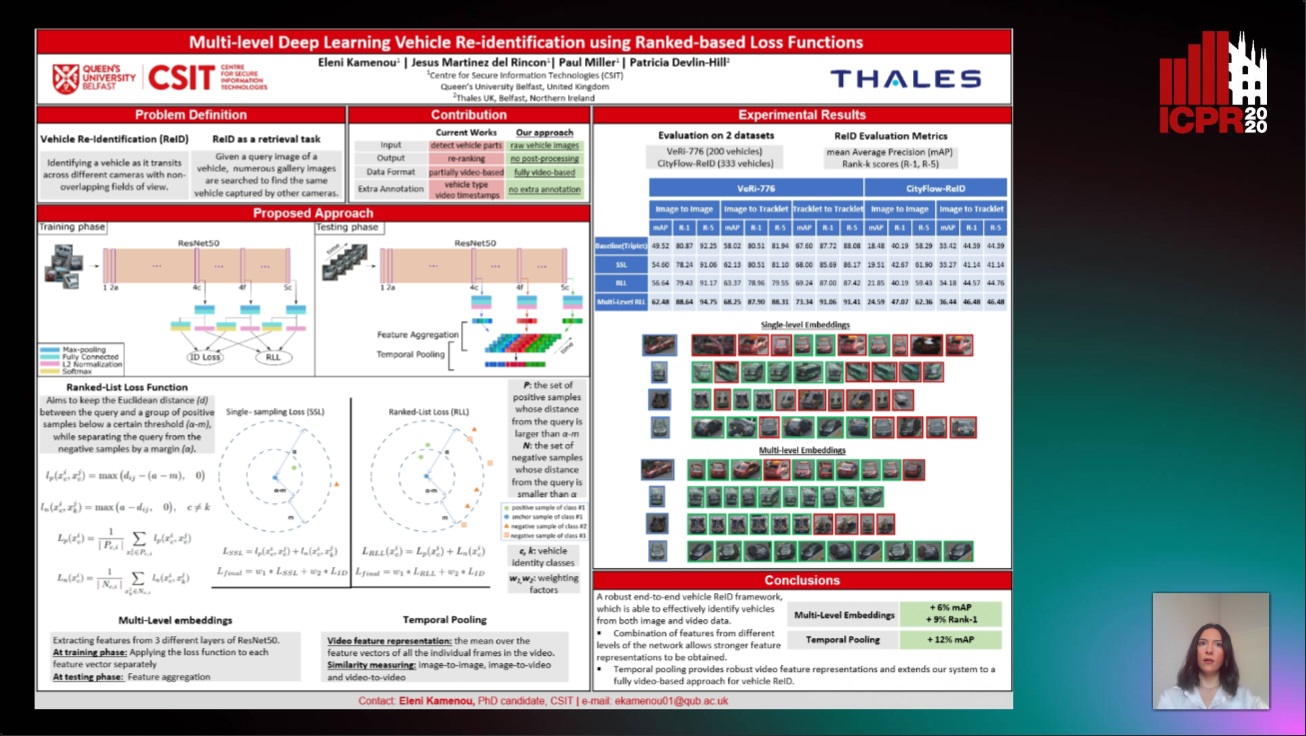
Auto-TLDR; Multi-Level Re-identification Network for Vehicle Re-Identification
Abstract Slides Poster Similar
Attention-Based Model with Attribute Classification for Cross-Domain Person Re-Identification
Simin Xu, Lingkun Luo, Shiqiang Hu
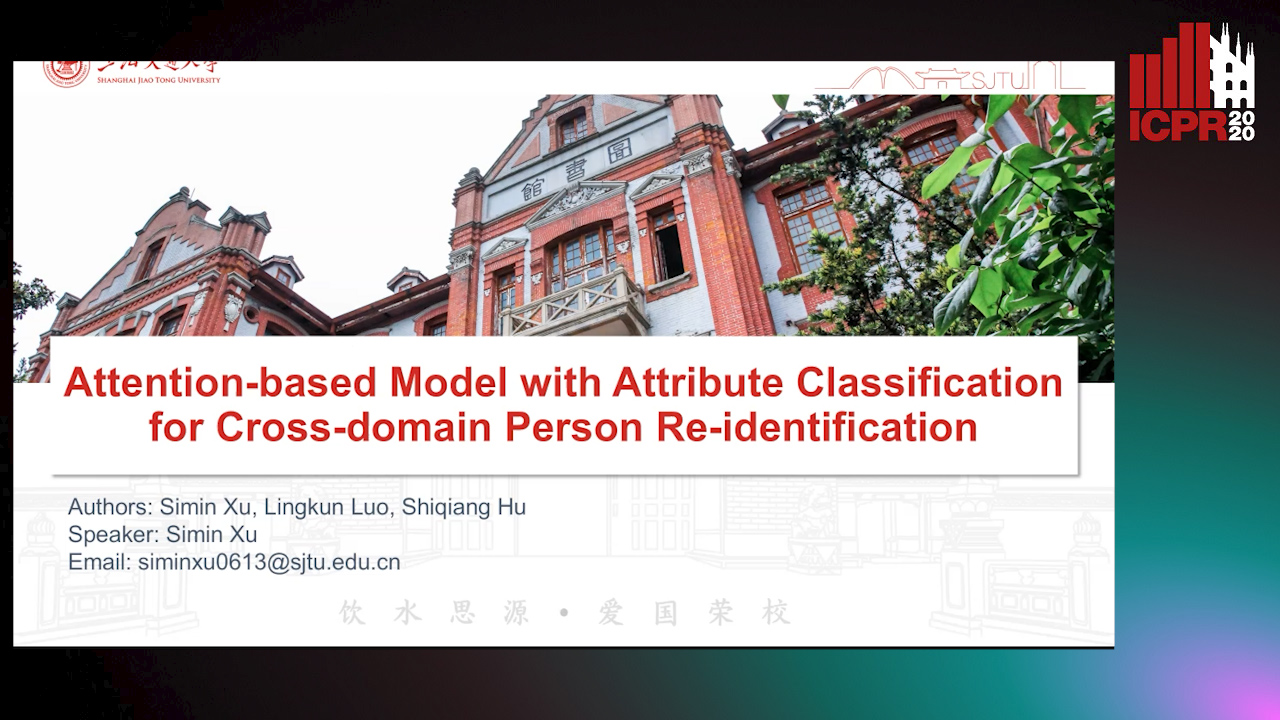
Auto-TLDR; An attention-based model with attribute classification for cross-domain person re-identification
How Important Are Faces for Person Re-Identification?
Julia Dietlmeier, Joseph Antony, Kevin Mcguinness, Noel E O'Connor
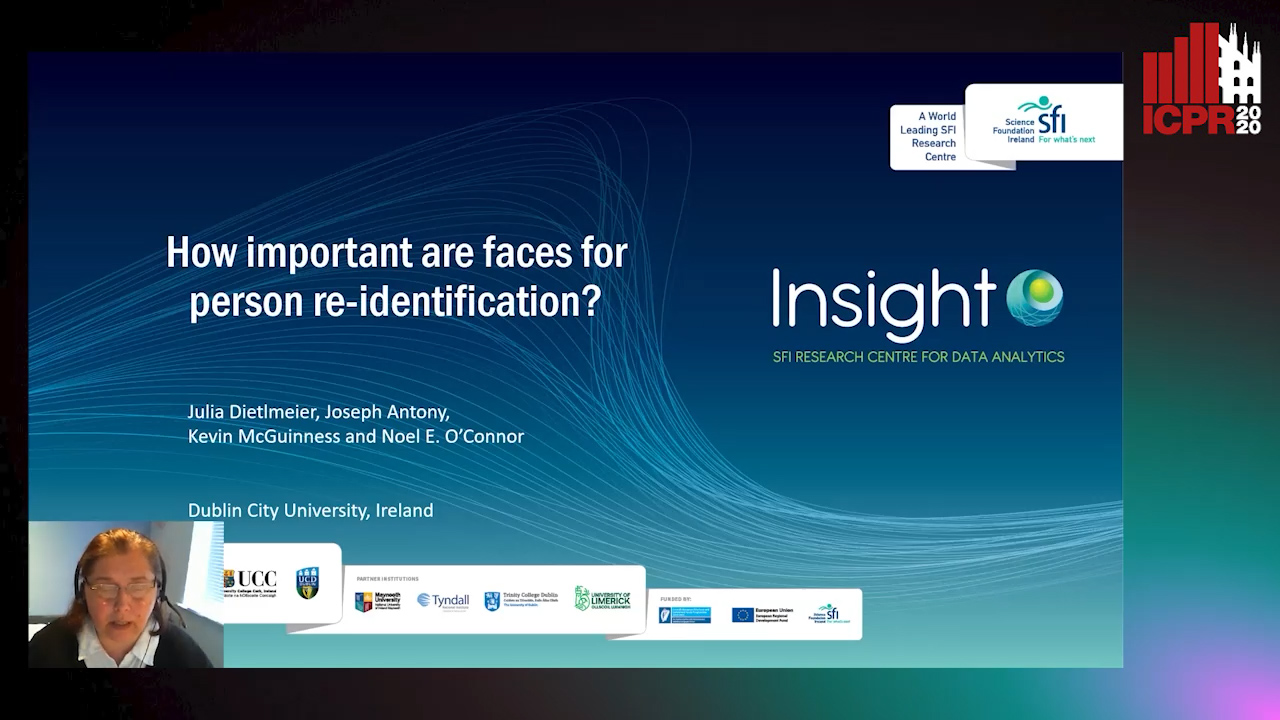
Auto-TLDR; Anonymization of Person Re-identification Datasets with Face Detection and Blurring
Abstract Slides Poster Similar
Unsupervised Domain Adaptation for Person Re-Identification through Source-Guided Pseudo-Labeling
Fabian Dubourvieux, Romaric Audigier, Angélique Loesch, Ainouz-Zemouche Samia, Stéphane Canu
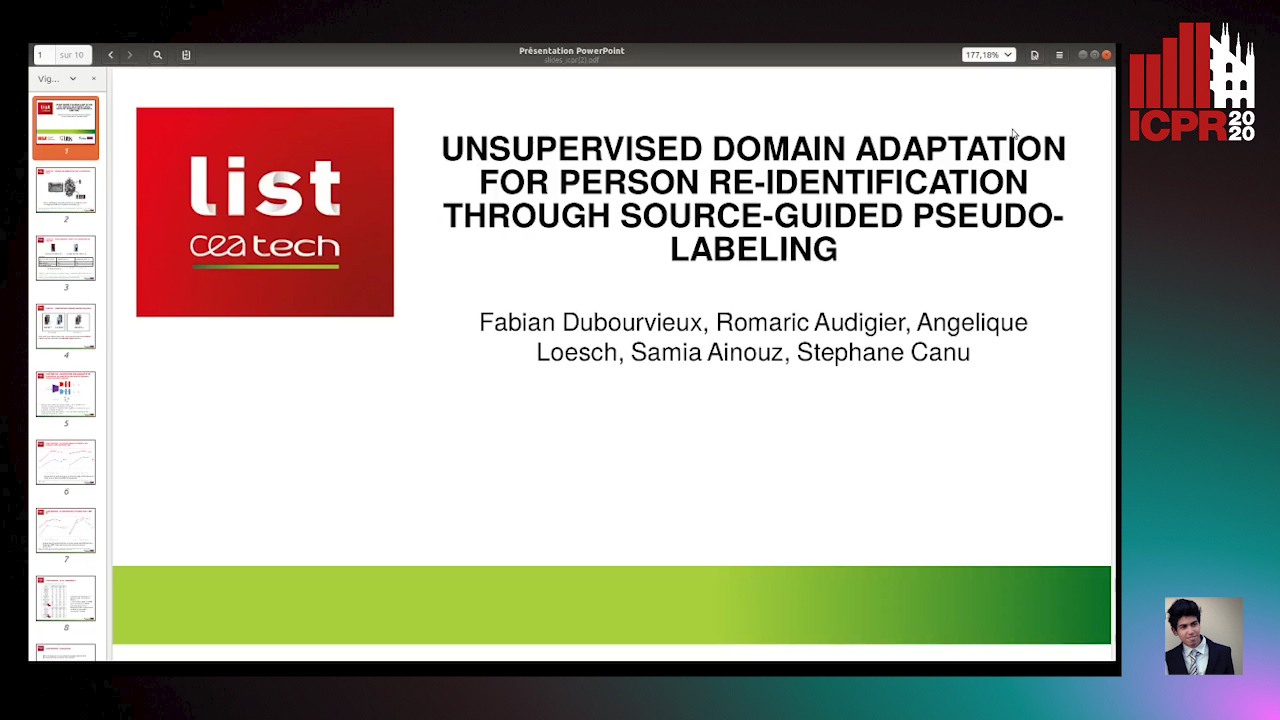
Auto-TLDR; Pseudo-labeling for Unsupervised Domain Adaptation for Person Re-Identification
Abstract Slides Poster Similar
Self-Paced Bottom-Up Clustering Network with Side Information for Person Re-Identification
Mingkun Li, Chun-Guang Li, Ruo-Pei Guo, Jun Guo
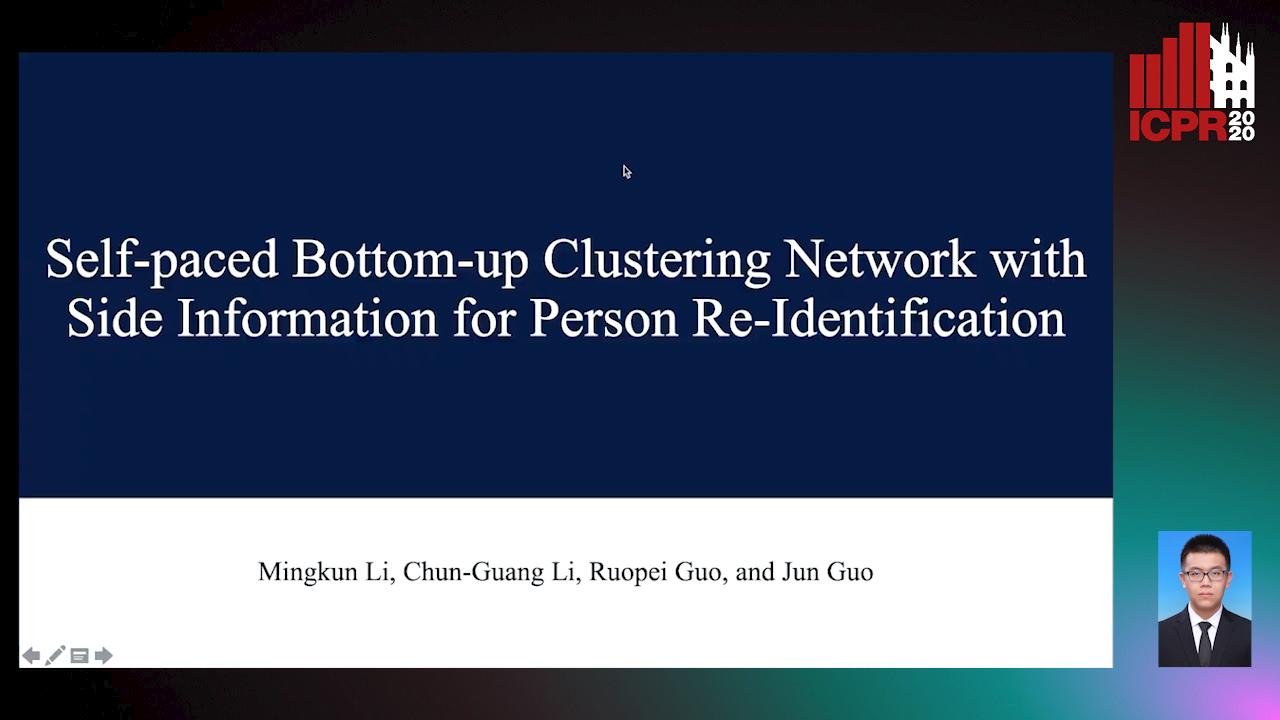
Auto-TLDR; Self-Paced Bottom-up Clustering Network with Side Information for Unsupervised Person Re-identification
Abstract Slides Poster Similar
CANU-ReID: A Conditional Adversarial Network for Unsupervised Person Re-IDentification
Guillaume Delorme, Yihong Xu, Stéphane Lathuiliere, Radu Horaud, Xavier Alameda-Pineda

Auto-TLDR; Unsupervised Person Re-Identification with Clustering and Adversarial Learning
Recurrent Deep Attention Network for Person Re-Identification
Changhao Wang, Jun Zhou, Xianfei Duan, Guanwen Zhang, Wei Zhou

Auto-TLDR; Recurrent Deep Attention Network for Person Re-identification
Abstract Slides Poster Similar
Decoupled Self-Attention Module for Person Re-Identification
Chao Zhao, Zhenyu Zhang, Jian Yang, Yan Yan

Auto-TLDR; Decoupled Self-attention Module for Person Re-identification
Abstract Slides Poster Similar
Polynomial Universal Adversarial Perturbations for Person Re-Identification
Wenjie Ding, Xing Wei, Rongrong Ji, Xiaopeng Hong, Yihong Gong

Auto-TLDR; Polynomial Universal Adversarial Perturbation for Re-identification Methods
Abstract Slides Poster Similar
Semi-Supervised Person Re-Identification by Attribute Similarity Guidance
Peixian Hong, Ancong Wu, Wei-Shi Zheng
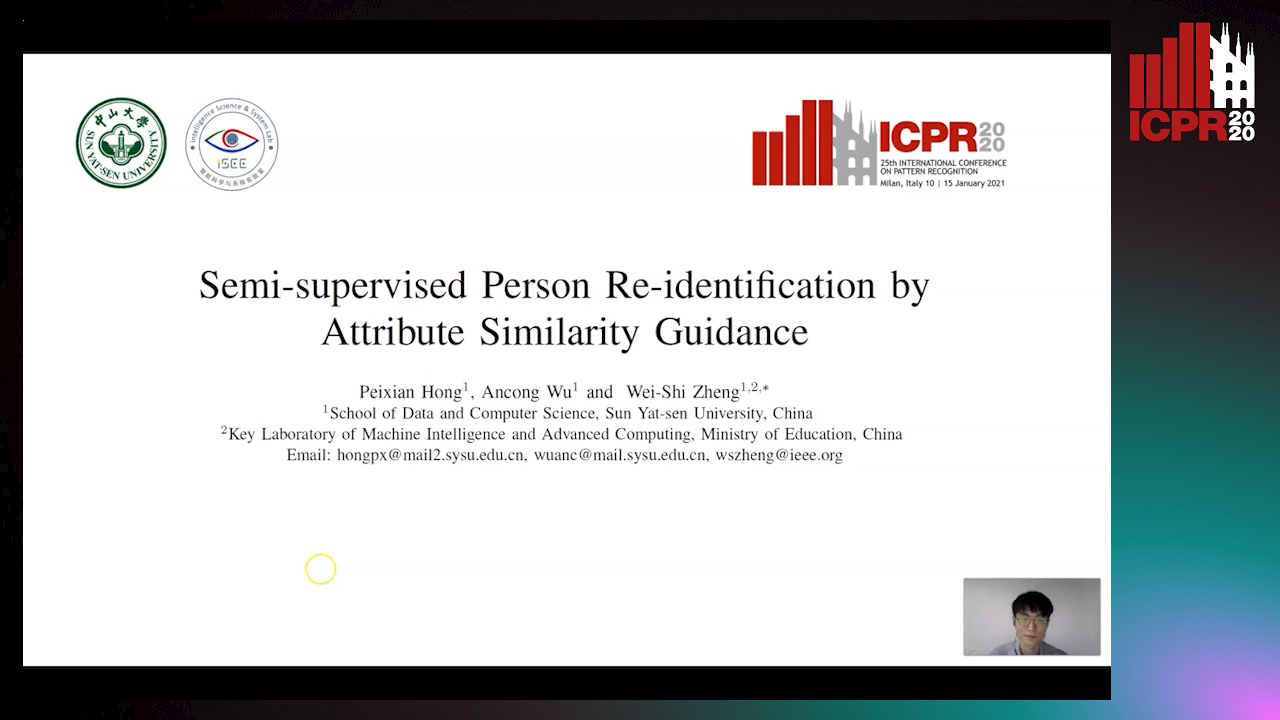
Auto-TLDR; Attribute Similarity Guidance Guidance Loss for Semi-supervised Person Re-identification
Abstract Slides Poster Similar
Domain Generalized Person Re-Identification Via Cross-Domain Episodic Learning
Ci-Siang Lin, Yuan Chia Cheng, Yu-Chiang Frank Wang
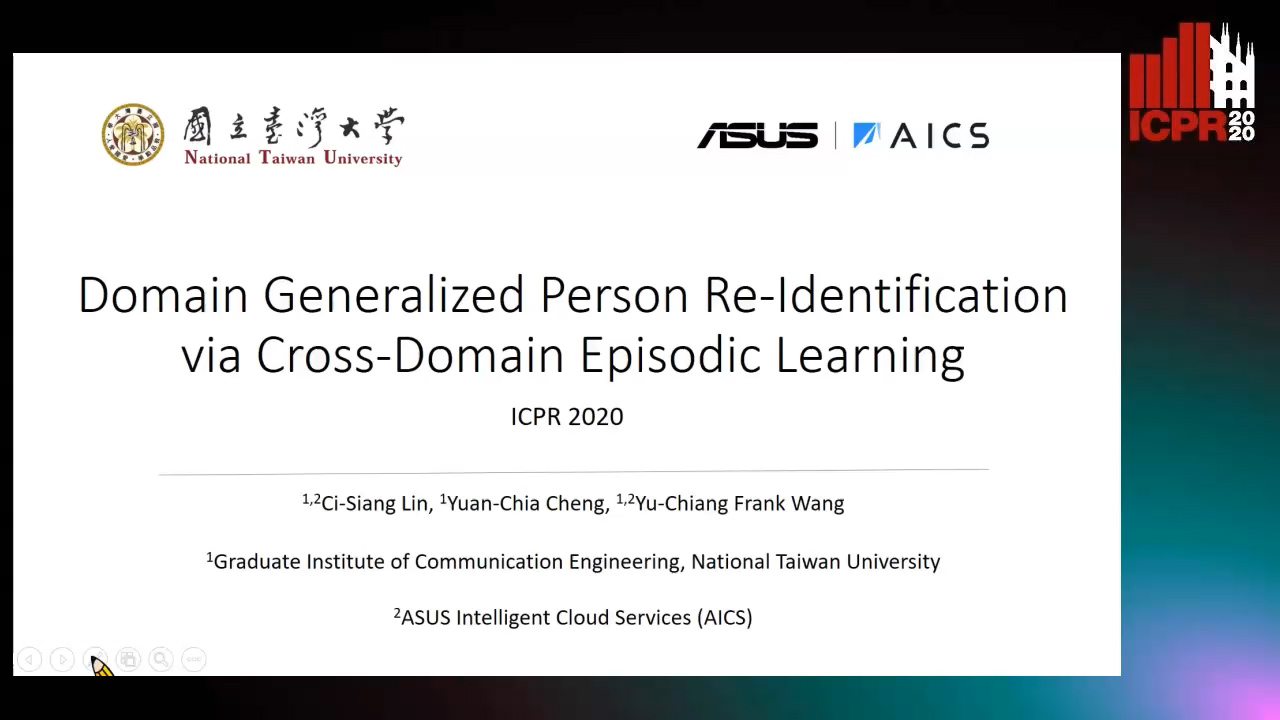
Auto-TLDR; Domain-Invariant Person Re-identification with Episodic Learning
Abstract Slides Poster Similar
RGB-Infrared Person Re-Identification Via Image Modality Conversion
Huangpeng Dai, Qing Xie, Yanchun Ma, Yongjian Liu, Shengwu Xiong

Auto-TLDR; CE2L: A Novel Network for Cross-Modality Re-identification with Feature Alignment
Abstract Slides Poster Similar
Sample-Dependent Distance for 1 : N Identification Via Discriminative Feature Selection

Auto-TLDR; Feature Selection Mask for 1:N Identification Problems with Binary Features
Abstract Slides Poster Similar
Loop-closure detection by LiDAR scan re-identification
Jukka Peltomäki, Xingyang Ni, Jussi Puura, Joni-Kristian Kamarainen, Heikki Juhani Huttunen
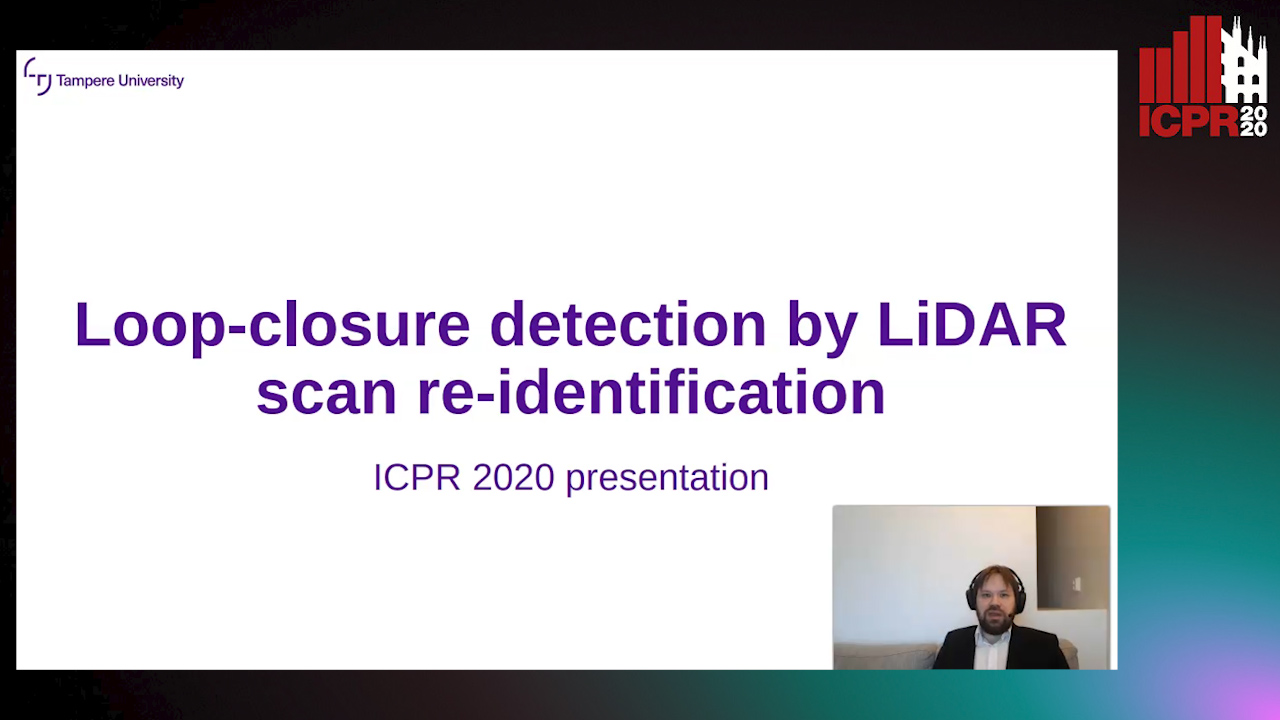
Auto-TLDR; Loop-Closing Detection from LiDAR Scans Using Convolutional Neural Networks
Abstract Slides Poster Similar
Multi-Label Contrastive Focal Loss for Pedestrian Attribute Recognition
Xiaoqiang Zheng, Zhenxia Yu, Lin Chen, Fan Zhu, Shilong Wang

Auto-TLDR; Multi-label Contrastive Focal Loss for Pedestrian Attribute Recognition
Abstract Slides Poster Similar
Generalized Local Attention Pooling for Deep Metric Learning
Carlos Roig Mari, David Varas, Issey Masuda, Juan Carlos Riveiro, Elisenda Bou-Balust

Auto-TLDR; Generalized Local Attention Pooling for Deep Metric Learning
Abstract Slides Poster Similar
Open-World Group Retrieval with Ambiguity Removal: A Benchmark
Ling Mei, Jian-Huang Lai, Zhanxiang Feng, Xiaohua Xie

Auto-TLDR; P2GSM-AR: Re-identifying changing groups of people under the open-world and group-ambiguity scenarios
Abstract Slides Poster Similar
Multi-Scale Cascading Network with Compact Feature Learning for RGB-Infrared Person Re-Identification
Can Zhang, Hong Liu, Wei Guo, Mang Ye

Auto-TLDR; Multi-Scale Part-Aware Cascading for RGB-Infrared Person Re-identification
Abstract Slides Poster Similar
Convolutional Feature Transfer via Camera-Specific Discriminative Pooling for Person Re-Identification
Tetsu Matsukawa, Einoshin Suzuki
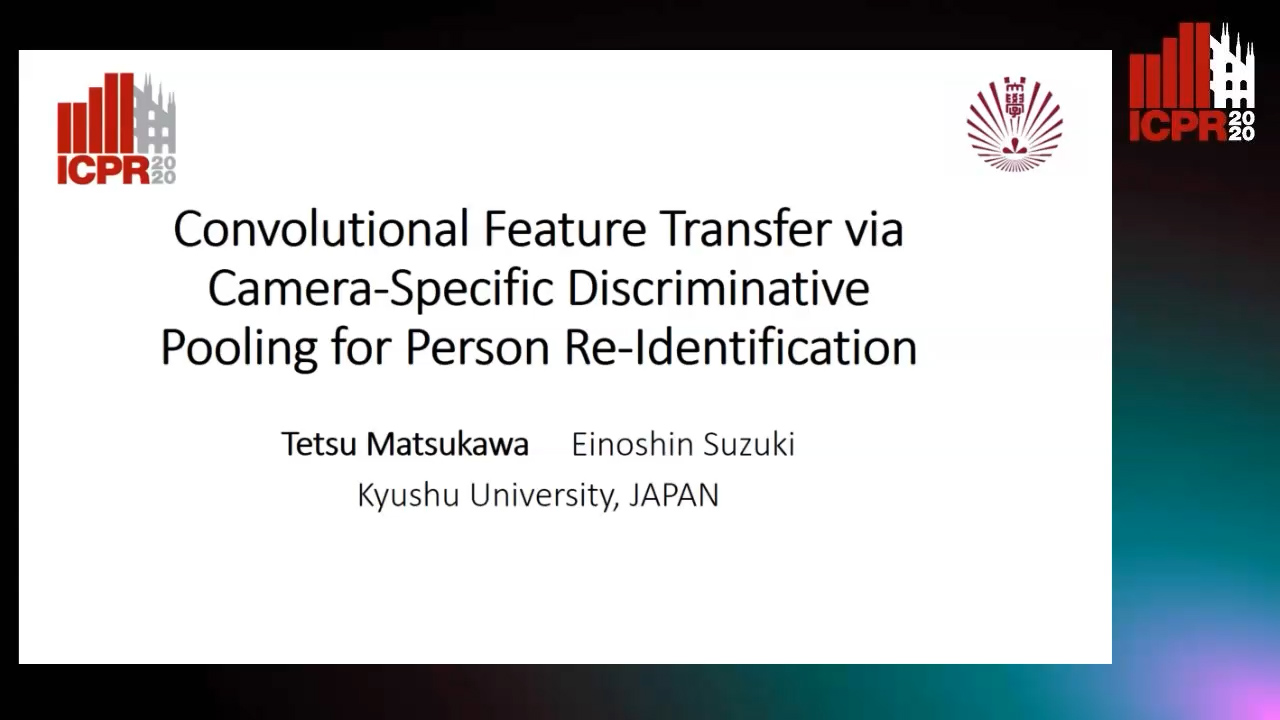
Auto-TLDR; A small-scale CNN feature transfer method for person re-identification
Abstract Slides Poster Similar
Online Domain Adaptation for Person Re-Identification with a Human in the Loop
Rita Delussu, Lorenzo Putzu, Giorgio Fumera, Fabio Roli

Auto-TLDR; Human-in-the-loop for Person Re-Identification in Infeasible Applications
Abstract Slides Poster Similar
A Duplex Spatiotemporal Filtering Network for Video-Based Person Re-Identification
Chong Zheng, Ping Wei, Nanning Zheng

Auto-TLDR; Duplex Spatiotemporal Filtering Network for Person Re-identification in Videos
Abstract Slides Poster Similar
WeightAlign: Normalizing Activations by Weight Alignment
Xiangwei Shi, Yunqiang Li, Xin Liu, Jan Van Gemert

Auto-TLDR; WeightAlign: Normalization of Activations without Sample Statistics
Abstract Slides Poster Similar
Attention Pyramid Module for Scene Recognition
Zhinan Qiao, Xiaohui Yuan, Chengyuan Zhuang, Abolfazl Meyarian
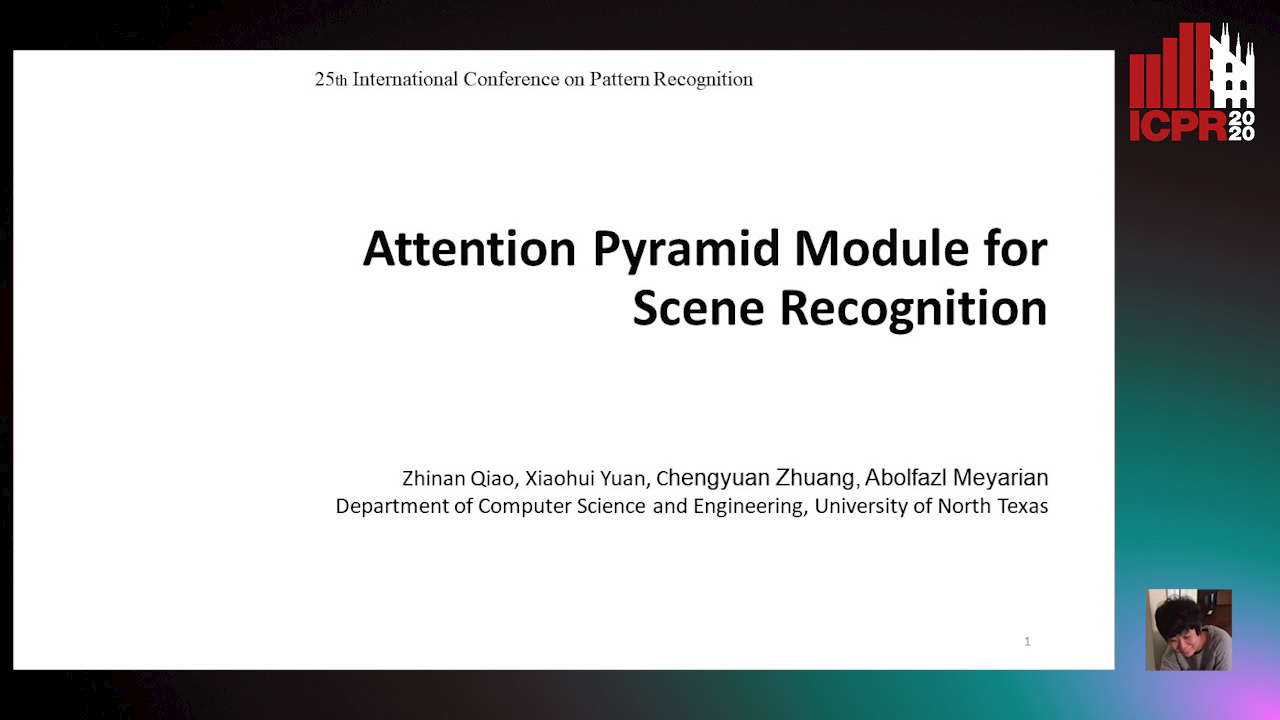
Auto-TLDR; Attention Pyramid Module for Multi-Scale Scene Recognition
Abstract Slides Poster Similar
Contextual Classification Using Self-Supervised Auxiliary Models for Deep Neural Networks
Sebastian Palacio, Philipp Engler, Jörn Hees, Andreas Dengel
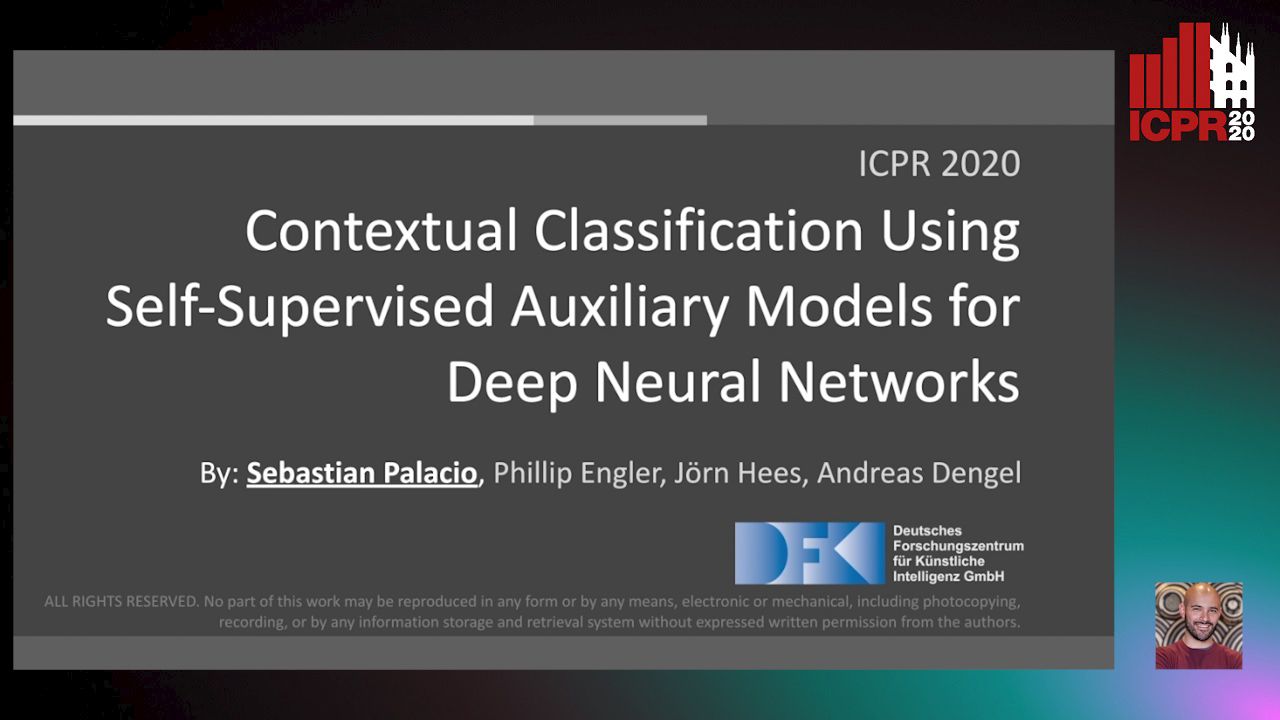
Auto-TLDR; Self-Supervised Autogenous Learning for Deep Neural Networks
Abstract Slides Poster Similar
A Base-Derivative Framework for Cross-Modality RGB-Infrared Person Re-Identification
Hong Liu, Ziling Miao, Bing Yang, Runwei Ding
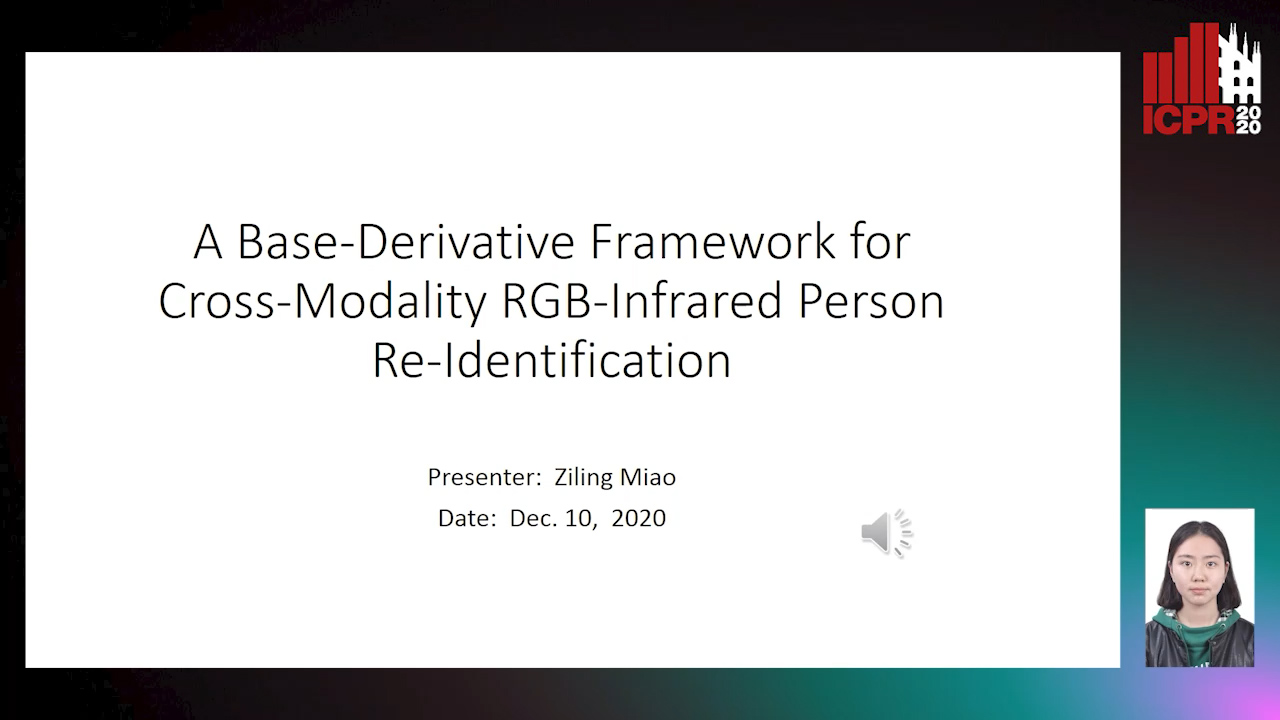
Auto-TLDR; Cross-modality RGB-Infrared Person Re-identification with Auxiliary Modalities
Abstract Slides Poster Similar
Norm Loss: An Efficient yet Effective Regularization Method for Deep Neural Networks
Theodoros Georgiou, Sebastian Schmitt, Thomas Baeck, Wei Chen, Michael Lew

Auto-TLDR; Weight Soft-Regularization with Oblique Manifold for Convolutional Neural Network Training
Abstract Slides Poster Similar
Rotation Invariant Aerial Image Retrieval with Group Convolutional Metric Learning
Hyunseung Chung, Woo-Jeoung Nam, Seong-Whan Lee

Auto-TLDR; Robust Remote Sensing Image Retrieval Using Group Convolution with Attention Mechanism and Metric Learning
Abstract Slides Poster Similar
Spatial-Aware GAN for Unsupervised Person Re-Identification
Fangneng Zhan, Changgong Zhang

Auto-TLDR; Unsupervised Unsupervised Domain Adaptation for Person Re-Identification
RMS-Net: Regression and Masking for Soccer Event Spotting
Matteo Tomei, Lorenzo Baraldi, Simone Calderara, Simone Bronzin, Rita Cucchiara

Auto-TLDR; An Action Spotting Network for Soccer Videos
Abstract Slides Poster Similar
P2 Net: Augmented Parallel-Pyramid Net for Attention Guided Pose Estimation
Luanxuan Hou, Jie Cao, Yuan Zhao, Haifeng Shen, Jian Tang, Ran He
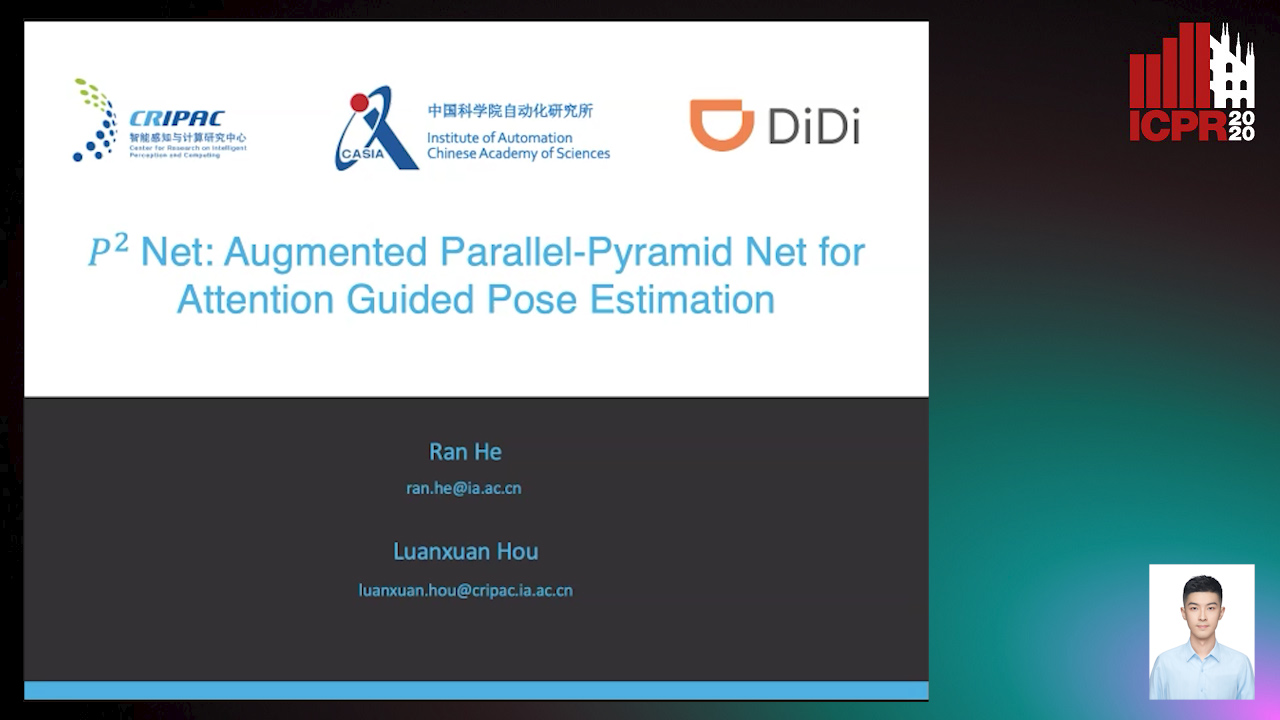
Auto-TLDR; Parallel-Pyramid Net with Partial Attention for Human Pose Estimation
Abstract Slides Poster Similar
Efficient-Receptive Field Block with Group Spatial Attention Mechanism for Object Detection
Jiacheng Zhang, Zhicheng Zhao, Fei Su
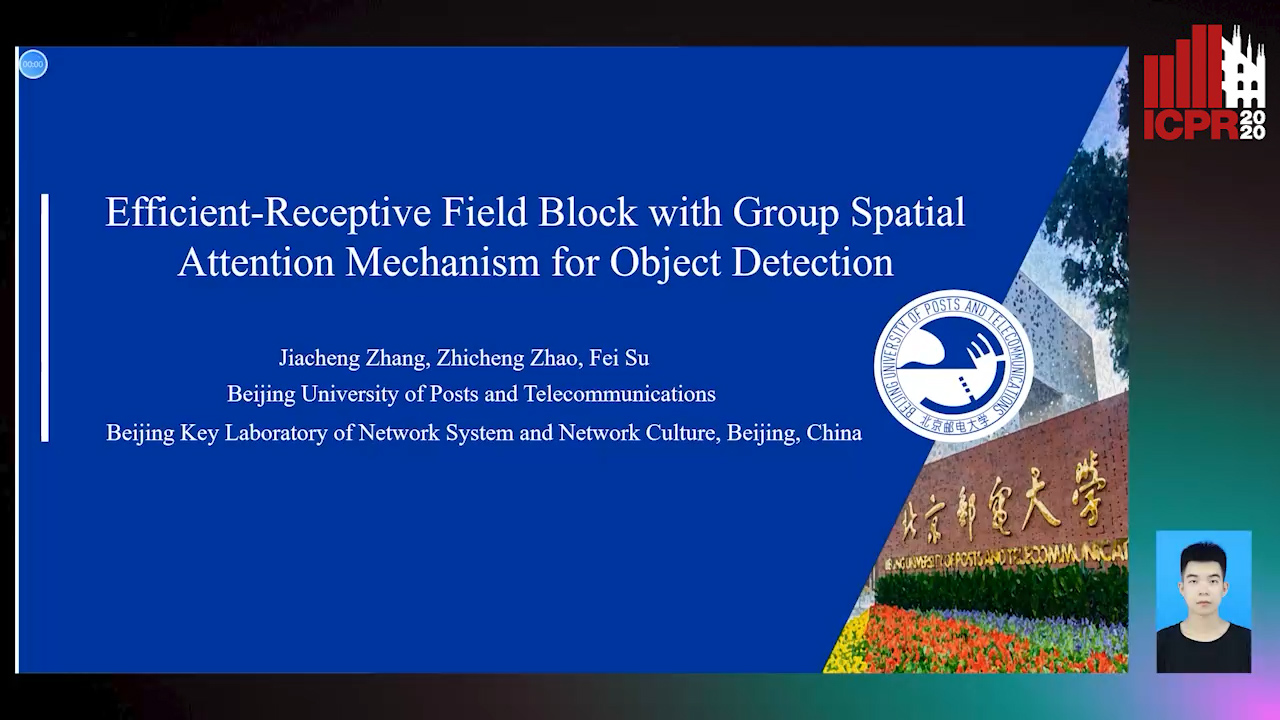
Auto-TLDR; E-RFB: Efficient-Receptive Field Block for Deep Neural Network for Object Detection
Abstract Slides Poster Similar
Self-Supervised Joint Encoding of Motion and Appearance for First Person Action Recognition
Mirco Planamente, Andrea Bottino, Barbara Caputo

Auto-TLDR; A Single Stream Architecture for Egocentric Action Recognition from the First-Person Point of View
Abstract Slides Poster Similar
Audio-Based Near-Duplicate Video Retrieval with Audio Similarity Learning
Pavlos Avgoustinakis, Giorgos Kordopatis-Zilos, Symeon Papadopoulos, Andreas L. Symeonidis, Ioannis Kompatsiaris
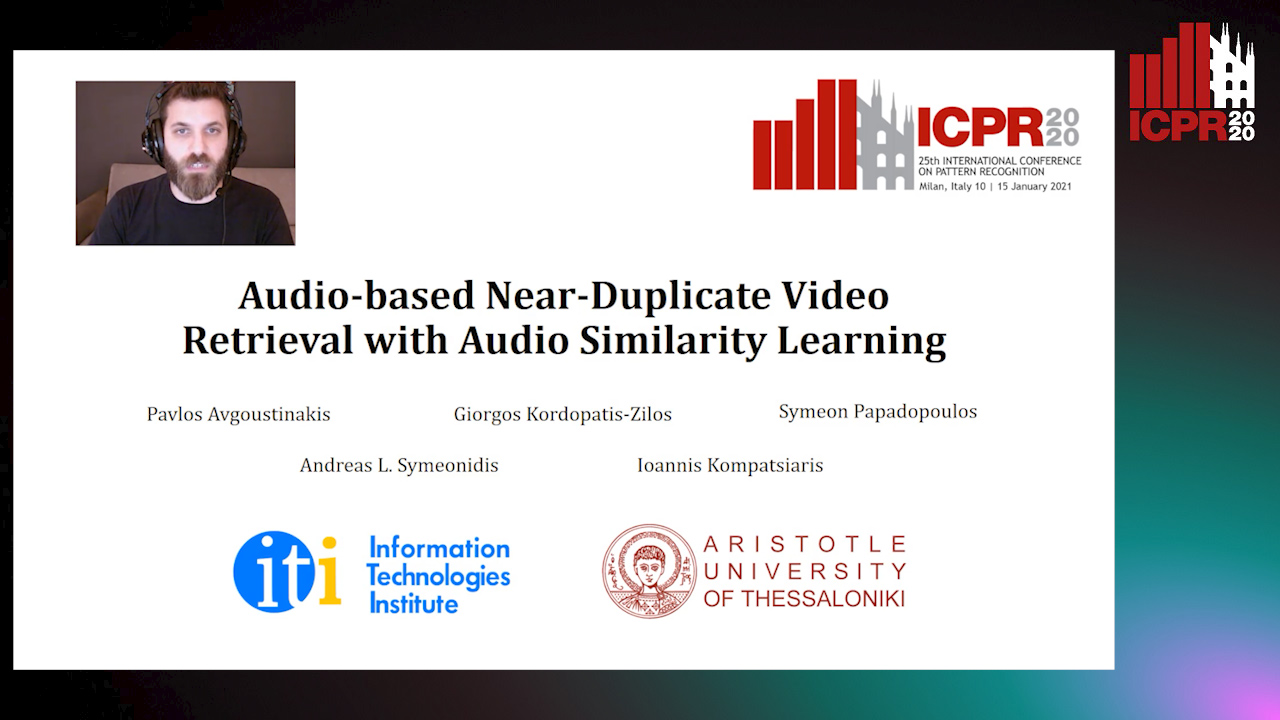
Auto-TLDR; AuSiL: Audio Similarity Learning for Near-duplicate Video Retrieval
Abstract Slides Poster Similar
Generalization Comparison of Deep Neural Networks Via Output Sensitivity
Mahsa Forouzesh, Farnood Salehi, Patrick Thiran
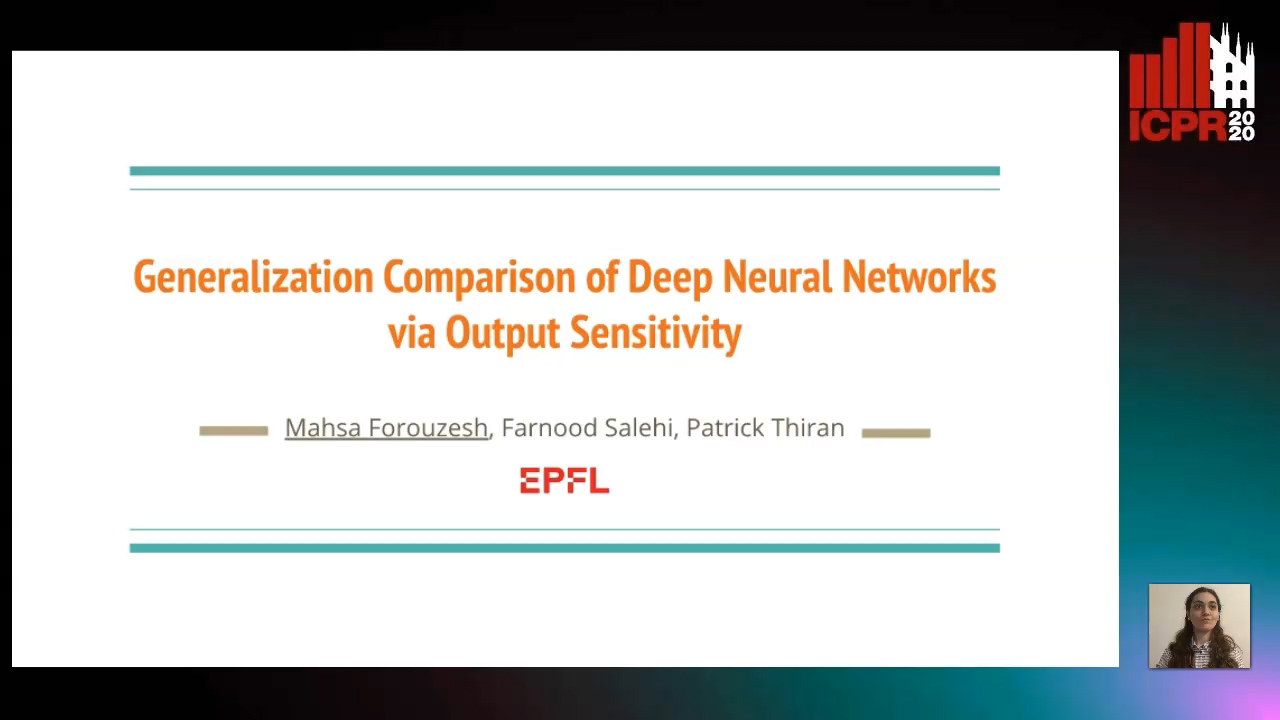
Auto-TLDR; Generalization of Deep Neural Networks using Sensitivity
Dual-Attention Guided Dropblock Module for Weakly Supervised Object Localization
Junhui Yin, Siqing Zhang, Dongliang Chang, Zhanyu Ma, Jun Guo

Auto-TLDR; Dual-Attention Guided Dropblock for Weakly Supervised Object Localization
Abstract Slides Poster Similar
A Novel Region of Interest Extraction Layer for Instance Segmentation
Leonardo Rossi, Akbar Karimi, Andrea Prati
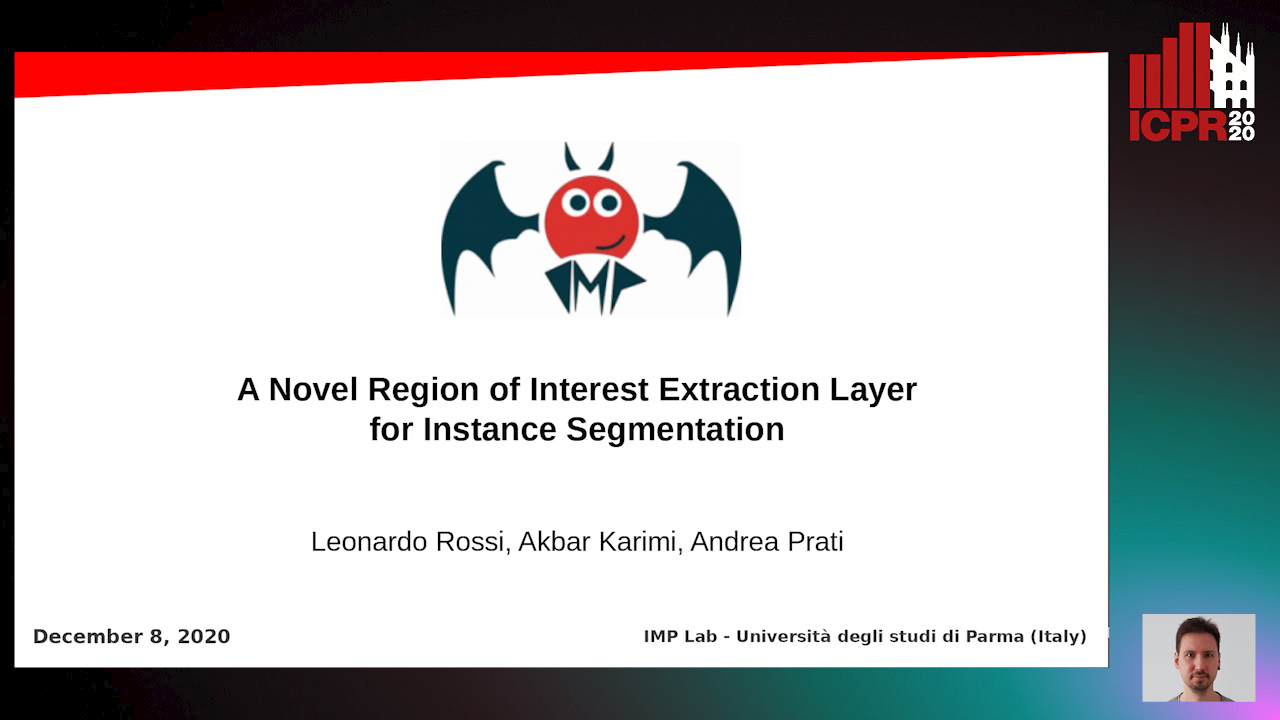
Auto-TLDR; Generic RoI Extractor for Two-Stage Neural Network for Instance Segmentation
Abstract Slides Poster Similar
DARN: Deep Attentive Refinement Network for Liver Tumor Segmentation from 3D CT Volume
Yao Zhang, Jiang Tian, Cheng Zhong, Yang Zhang, Zhongchao Shi, Zhiqiang He

Auto-TLDR; Deep Attentive Refinement Network for Liver Tumor Segmentation from 3D Computed Tomography Using Multi-Level Features
Abstract Slides Poster Similar
Attention As Activation
Yimian Dai, Stefan Oehmcke, Fabian Gieseke, Yiquan Wu, Kobus Barnard

Auto-TLDR; Attentional Activation Units for Convolutional Networks